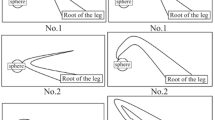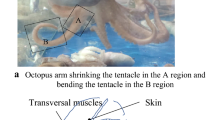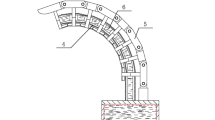Abstract
In this study, we focus on flexible manipulators made of silicone. In conventional works, various flexible manipulators have been proposed. Usually, these manipulators are driven by air pressure. By expanding some parts of a finger, pushing force is generated to bend the finger. In contrast, most real creatures use a pulling force to move their bodies. In our previous works, we developed a flexible manipulator using pulling mechanism that generate octopus-like behavior. However, advantages of the pulling mechanism were not demonstrated enough. In this paper, to confirm the advantages of the proposed pulling mechanism, we develop two manipulators of the same size: one uses the conventional pushing mechanism, and the other uses the proposed pulling mechanism. The goal of this study is to explore the advantages of the developed manipulator with the pulling mechanism by comparing it to the conventional manipulator with the pushing mechanism. Experiments are conducted to compare their adaptive behaviors.



















Similar content being viewed by others
Explore related subjects
Discover the latest articles, news and stories from top researchers in related subjects.References
Gray J (1946) The mechanism of locomotion in snakes. J Exp Biol 23:101–123
Sumbre G, Gutfreund Y, Fiorito G et al (2001) Control of octopus arm extension by a peripheral motor program. Science 293(5536):1845–1848
Yekutieli Y, Sumbre G, Flash T et al (2002) How to move with no rigid skeleton? Biologist 49(6):137–139
Gutfreund Y, Flash T, Fiorito G et al (1998) Patterns of arm muscle activation involved in octopus reaching movements. J Neurosci 18(15):5976–5987
Sumbre G, Gutfreund Y, Fiorito G et al (2001) Control of octopus arm extension by a peripheral motor program. Science 293(5536):1845–1848
Gutfreund Y, Flash T, Fiorito G et al (1998) Patterns of arm muscle activation involved in octopus reaching movements. J Neurosci 18(15):5976–5987
Calist M, Giorelli M, Levy G et al (2011) An octopus-bioinspired solution to movement and manipulation for soft robots. Bioinspir Biomim 6:036002
Laschi C, Cianchetti M, Mazzolai B et al (2012) Soft robot arm inspired by the octopus. Adv Robot 26(7):709–727
Ito K, Hagimori S (2017) Flexible manipulator inspired by octopus: development of soft arms using sponge and experiment for grasping various objects. Artif Life Robot 22(3):283–288
Acknowledgements
This research was partially supported by the Japan Society for the Promotion of Science through the Grant-in-Aid for Scientific Research (18K11445, 15KK0015).
Author information
Authors and Affiliations
Corresponding author
Additional information
Publisher's Note
Springer Nature remains neutral with regard to jurisdictional claims in published maps and institutional affiliations.
About this article
Cite this article
Ito, K., Mukai, T. Flexible manipulator inspired by octopi: advantages of the pulling mechanism. Artif Life Robotics 25, 167–172 (2020). https://doi.org/10.1007/s10015-019-00573-7
Received:
Accepted:
Published:
Issue Date:
DOI: https://doi.org/10.1007/s10015-019-00573-7




